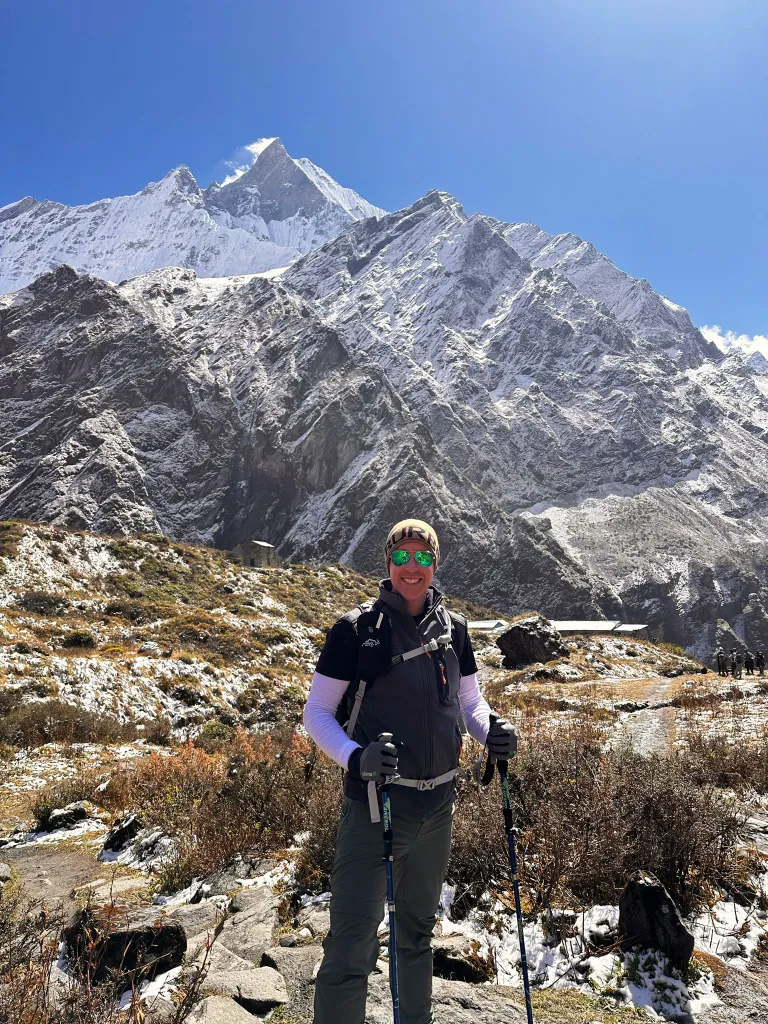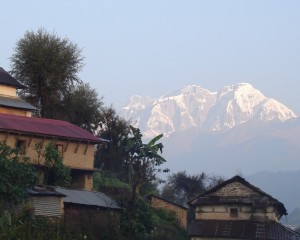What is the Difference Between a Trekking Peak and an Expedition?
You’re ready to take on the challenge of towering peaks, but there’s one big question: Should you go for a trekking peak, an exciting yet achievable adventure for fit trekkers? Or are you prepared for the extreme test of an expedition peak, where high-altitude climbs demand serious skill, endurance, and weeks of commitment?
Many adventurers who have mastered the remote trails of the Himalayas know the thrill of reaching new heights. Both trekking peaks and expeditions offer the rush of mountaineering, but they are worlds apart in difficulty, preparation, and experience required.
To clear up the confusion, we’ve laid out everything you need to know about trekking peaks vs. expeditions. This way, you can choose the proper challenge for your next big climb
What is a Trekking Peak?
Trekking peak is a mountain in Nepal that is easier to climb when you compare it to those towering and highest peaks. These peaks are open to fit trekkers with basic mountain skills conquered with the help of ropes, crampons, and ice axes.
These peaks are regulated by the Nepal Mountaineering Association (NMA) and typically belong to the Group "B" NMA Climbing Peaks category. They are lower in altitude and have easier routes compared to more challenging expedition peaks. However, they still require special equipment and some mountaineering knowledge.
Characteristics of Trekking Peaks
- Altitude: Most trekking peaks are below 7,000 meters, with many ranging from 5,800 meters to 6,584 meters.
- Accessibility: You can usually climb these peaks from a base camp, and sometimes, you'll need a high camp to help you reach the top.
- Difficulty: Though easier than expedition peaks, trekking peaks still present challenges that require a certain level of skill. Climbers need to know how to use crampons (spikes for ice) and ice axes.
- Permits and Fees: The NMA issues climbing permits for trekking peaks, and the fees can vary depending on the season and the specific peak.
Some popular trekking peaks in Nepal include Island Peak (Imja Tse) at 6,189 meters, Mera Peak at 6,476 meters, Yala Peak at 5,732 meters, Pisang Peak at 6,091 meters, Lobuche East at 6,119 meters, and Tharpu Chuli (Tent Peak) at 5,663 meters.
What is an Expedition Peak?
An expedition is a challenging mountaineering journey involving high-altitude peaks, usually above 6000m unlike those trekking peaks, expeditions. In Nepal, expeditions for peaks above 6,500 meters are regulated by the Ministry of Culture, Tourism, and Civil Aviation (MoTCA).
These require advanced mountaineering skills, extensive preparation, and strong physical and mental endurance. Expeditions are considered the highest level of mountaineering challenges, requiring dedication, expertise, and careful preparation to ensure safety and success.
Characteristics of Expeditions
- Altitude: Expeditions target peaks over 6,000 meters, including Mount Everest (8,848.86m), Annapurna (8,091m), and Manaslu (8,163m).
- Technical Difficulty: Climbers must use ice axes, crampons, ropes, and other mountaineering gear while navigating glaciers and steep climbs. High-altitude survival skills are essential.
- Preparation: Expeditions require months of planning, including securing permits, organizing logistics, training, and assembling a skilled team with Sherpas or guides.
- Duration: These climbs last several weeks to months to allow for acclimatization and to adjust for unpredictable weather.
- Permit Requirements: Climbers must apply for permits six months in advance through MoTCA, providing climbing routes, team details, and maps.
Some well-known expedition peaks in Nepal include Mount Everest (8,848.86m), Lhotse (8,516m), Makalu (8,485m), Cho Oyu (8,188m), and Annapurna I (8,091m).

Differences Between a Trekking Peak and an Expedition Peak
How to Prepare for Any Expedition or Peak Climbing
Preparing for a mountain expedition or peak climbing requires both physical and mental readiness. You also need proper gear, technical skills, and knowledge of high-altitude conditions. Let us get to know how to prepare simply and practically:
Physical Preparation
To climb a mountain, you need strong legs, good endurance, and body strength. To improve your stamina, start with long hikes or daily walks on uneven terrain. Running, cycling, and stair climbing are also great ways to build endurance. In your workout routine, include strength-training exercises like squats, lunges, and step-ups for your legs, as well as core exercises like planks and crunches for stability. Since you’ll be carrying a backpack, practice hiking with some weight to get used to it.
Technical Skills
Even if you are climbing a non-technical peak, knowing basic mountaineering skills is essential. Learn how to use an ice axe and crampons properly so you can walk safely on ice and snow. Rope work is also an important practice for tying knots, belaying, and rappelling. If your climb involves glaciers, you need to know how to move on ice and cross crevasses.
Mental Preparation
Climbing a mountain is not just about physical strength—it’s also a mental challenge. You may face long days of walking in extreme weather, unexpected delays, or exhaustion. Being mentally prepared will help you push through difficult moments. Develop patience and resilience by setting small goals and staying positive. Learning deep breathing techniques can help you stay calm and manage oxygen intake better at high altitudes. Visualization techniques, where you imagine yourself reaching the summit, can also boost motivation.
Acclimatization and High-Altitude Preparation
One of the biggest challenges in high-altitude climbing is the thin air. To avoid altitude sickness, you should climb gradually and give your body time to adjust. Drink plenty of water, at least 3–4 liters per day, to stay hydrated. Your body also needs more energy at high altitudes, so eat high-calorie foods like nuts, chocolate, and energy bars. Learn the symptoms of altitude sickness, such as headaches, dizziness, and nausea, and be prepared to descend if needed. Some climbers take medicines like Diamox, but always consult a doctor before using any medication.
Trekking Peak vs. Expedition: Which One is Right for You?
Now that you are familiar with the differences between a trekking peak and an expedition, choosing the right one depends on several factors, such as experience, fitness level, time commitment, and overall goal.
A trekking peak is a good choice if you are new to mountaineering, prefer a shorter and more affordable climb, and want to experience high-altitude trekking with some basic mountaineering skills.
If you have prior mountaineering experience, are prepared for long and physically demanding climbs, and are willing to face extreme conditions with higher risks, an expedition is the right challenge for you.
Both offer rewarding experiences and the chance to test your limits in the mountains. Choose wisely based on your abilities and goals.

To wrap up, preparing for any expedition or peak climbing requires physical training, mountaineering skills, proper gear, and mental readiness. It's important to gradually build your strength, learn essential climbing techniques, and prepare for the challenges of high-altitude environments. With the right preparation, you can confidently face the adventure ahead.
Ready to take your adventure to the next level? Nepal Vision Treks offers expert guidance and well-planned itineraries for trekking peaks and expeditions.
FAQS






